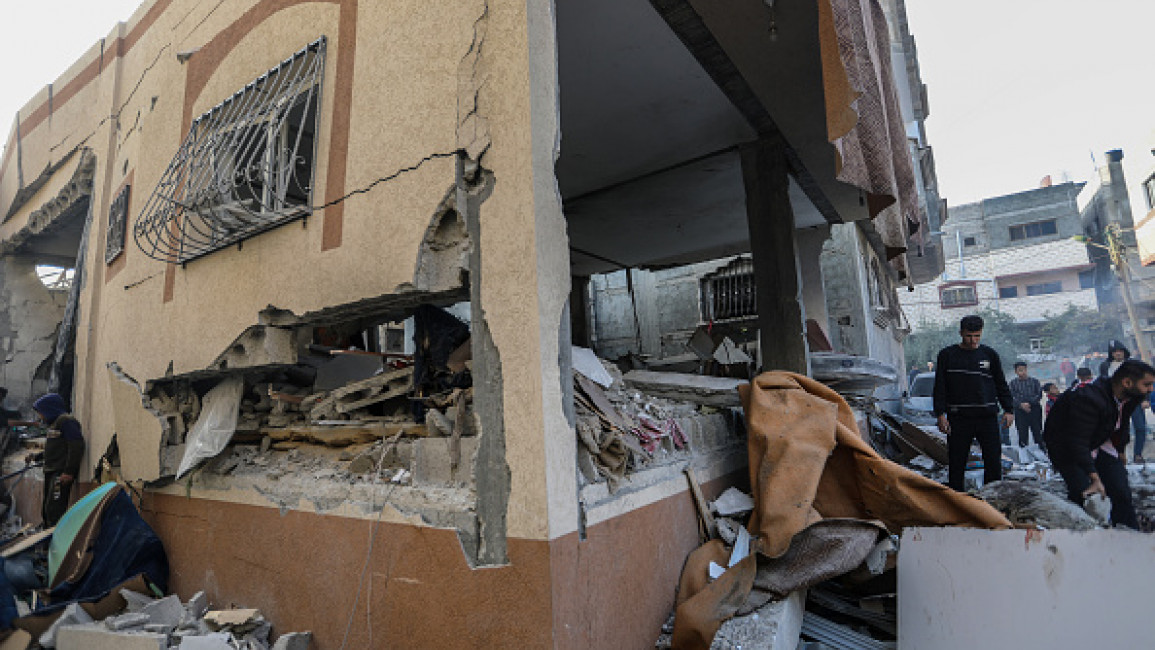Gaza: How did Hamas and Israel's truce come to an end?
Israel has resumed airstrikes on Gaza after a seven-day pause in its war on the Palestinian enclave.
The New Arab looks into why violence returned so quickly?
'We will continue war'
The easiest answer to this question is that peace was never meant to last.
The truce began on November 24 and despite being renewed twice before its ended on Friday, Israel has been adamant from the offset that it was only a temporary truce and that its devastating war on Gaza would resume.
On the night of November 22 when the truce was agreed, Israeli Prime Minister Benjamin Netanyahu vowed during a a press conference that Israel would “complete the elimination of Hamas and ensure that there will be no new threat to the state of Israel from Gaza”.
“We are at war, and we will continue the war … We will continue until we achieve all our goals”, Netanyahu added.
Despite Netanyahu’s words, the countries who mediated the truce, such as Qatar and Egypt, seemed hopeful that the pause could be extended beyond Friday and possibly even become a permanent ceasefire.
But the rhetoric from Israel in the last week from Israel was far from conducive to the ceasefire holding.
On Monday, while meeting Israeli troops who were part of the invasion force in Gaza, Defence Minister Yoav Gallant said to them: “You now have a few days, we will return to fighting, we will use the same amount of power and more.”
“We will fight in the entire Strip,” he concluded.
How did the ceasefire end and who broke it?
The impasse allegedly occurred when Israel refused to negotiate further. Hamas wanted to negotiate the terms of the release of elderly male civilian hostages held in Gaza, but Israel claimed the group still had women hostages to be released. Hamas retorted that the women hostages were soldiers and thus not subject to the original truce agreement, which allowed only for the release of Israeli civilians. Hamas wanted to renegotiate its own terms, but Israel was not willing to do so and wanted to give Hamas nothing in return for its demands.
Hamas refused this and Israel then walked away.
About an hour before the truce was supposed to end, at 7am (05:00 GMT), Israel claimed that its Iron Dome missile defence system had detected and intercepted incoming rockets from Gaza.
They claimed Hamas had officially violated the ceasefire agreement – with the US agreeing with its ally – and immediately resumed devastating airstrikes that killed almost 200 Palestinians in a matter of mere hours.
However, the situation on the ground immediately prior to the breakdown of the ceasefire tells a different story. On November 29, two days before the end of the truce, the UN’s OCHA reported that Israeli forces shot at Palestinians in Gaza, killing two. On November 30, reports came in of Israeli forces shelling parts of the strip.
Despite these provocations, Hamas attempted to continue negotiations through the mediators.
Is another ceasefire possible?
According to Qatar, despite Israel resuming its large-scale war on Gaza, negotiations are continuing with the emphasis on the release of military reservists.
But as of yet, the status of such talks are unknown, while Israel has apparently ordered its negotiators to leave Qatar.
Many analysts believe that the Netanyahu government calculates it has secured the return of just enough hostages to appease the public, enabling it to continue its attack on Gaza. Observers also say that Israel's main goal now is to attack Gaza and not to save hostages.
Given it has refocussed its attacks on Gaza’s south, where most of the civilians are and where Israel said was a “safe zone”, and has dropped leaflets telling civilians to move even more south towards Rafah, it seems that Israel is determined to wage its war until it achieves what it considers to be victory.
Many people think the key lies with the US, but some analysts see Washington’s position as either incoherent or disingenuous. On one hand, US officials have paid lip service to protecting civilians, however has ruled out support for a permanent ceasefire and agrees with Israel’s as yet intangible aim of “eliminating Hamas”.
Similarly, it claims to have urged Israel to show more restraint in its current attack on Gaza and especially the south, yet Israel has shown no such restraint and the US continues to send even more bombs, reaffirming its support as it targets civilians in the south, as it did in the north.
If there is another ceasefire, it is likely to be similar to the last one, with the focus being on the release of hostages for Israel, but with its target still very firmly fixed on Gaza.



